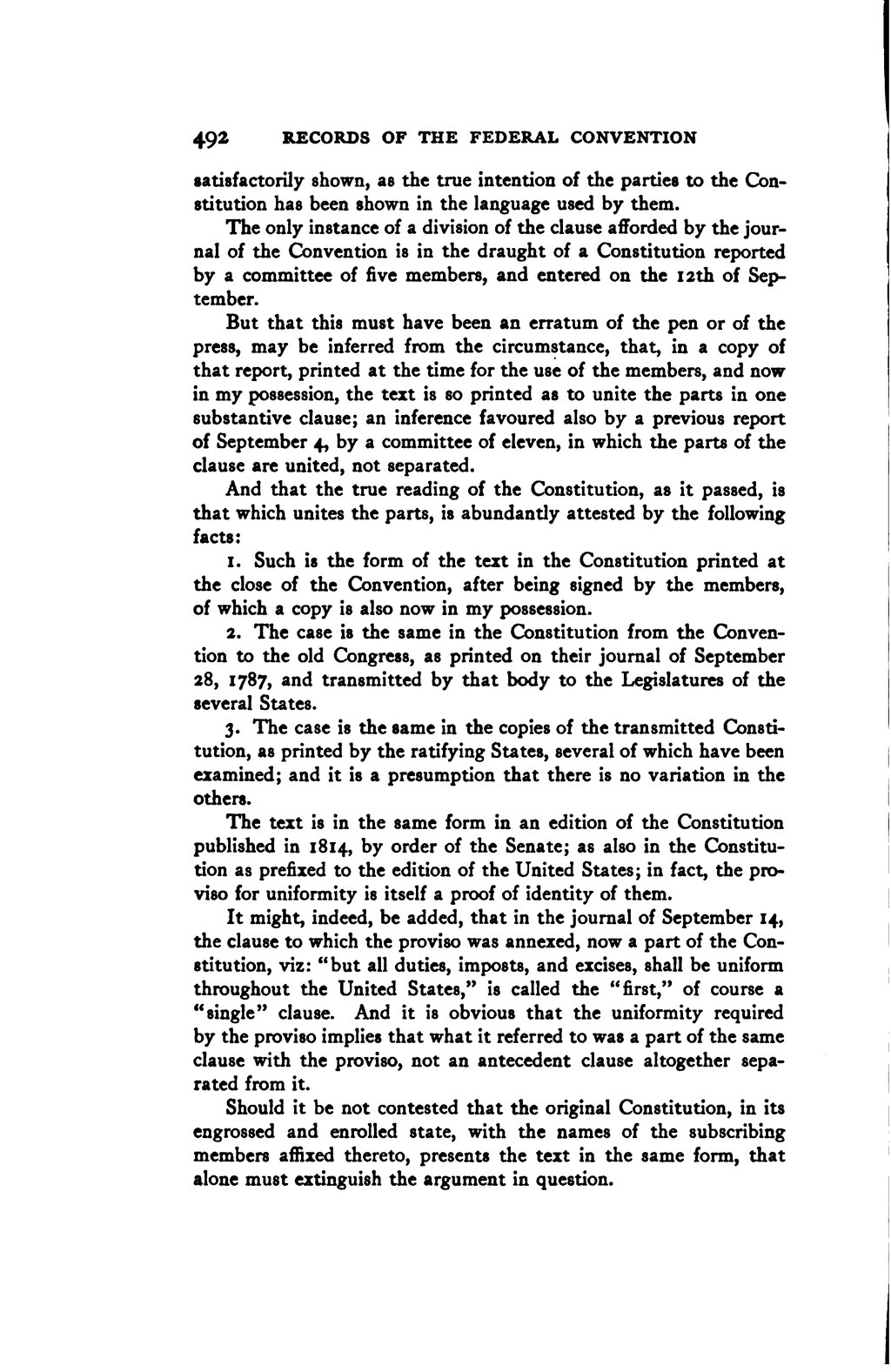satisfactorily shown, as the true intention of the parties to the Constitution has been shown in the language used by them.
The only instance of a division of the clause afforded by the journal of the Convention is in the draught of a Constitution reported by a committee of five members, and entered on the 12th of September.
But that this must have been an erratum of the pen or of the press, may be inferred from the circumstance, that, in a copy of that report, printed at the time for the use of the members, and now in my possession, the text is so printed as to unite the parts in one substantive clause; an inference favoured also by a previous report of September 4, by a committee of eleven, in which the parts of the clause are united, not separated.
And that the true reading of the Constitution, as it passed, is that which unites the parts, is abundantly attested by the following facts:
1. Such is the form of the text in the Constitution printed at the close of the Convention, after being signed by the members, of which a copy is also now in my possession.
2. The case is the same in the Constitution from the Convention to the old Congress, as printed on their journal of September 28, 1787, and transmitted by that body to the Legislatures of the several States.
3. The case is the same in the copies of the transmitted Constitution, as printed by the ratifying States, several of which have been examined; and it is a presumption that there is no variation in the others.
The text is in the same form in an edition of the Constitution published in 1814, by order of the Senate; as also in the Constitution as prefixed to the edition of the United States; in fact, the proviso for uniformity is itself a proof of identity of them.
It might, indeed, be added, that in the journal of September 14, the clause to which the proviso was annexed, now a part of the Constitution, viz: “but all duties, imposts, and excises, shall be uniform throughout the United States,” is called the “first,” of course a “single” clause. And it is obvious that the uniformity required by the proviso implies that what it referred to was a part of the same clause with the proviso, not an antecedent clause altogether separated from it.
Should it be not contested that the original Constitution, in its engrossed and enrolled state, with the names of the subscribing members affixed thereto, presents the text in the same form, that alone must extinguish the argument in question.
